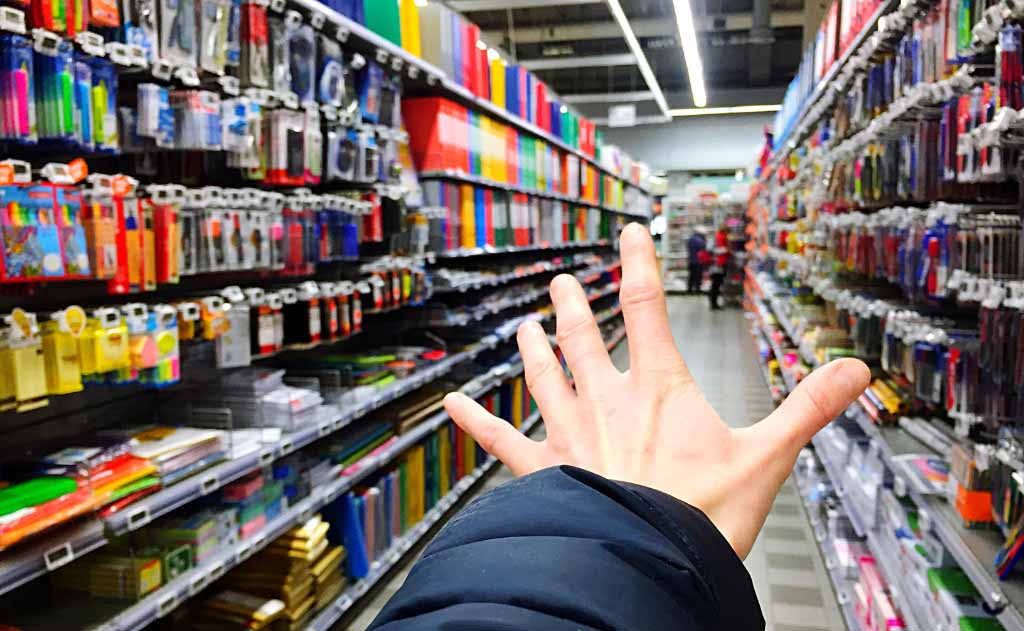

A Beginner’s Guide to Low-Waste Lifestyle
Alright! So, the article’s titled low-waste lifestyle and not zero-waste, well because, I am not living a zero waste lifestyle- yet. Because, guess what? It doesn’t happen overnight or even days for that matter. It’s a process, and a demanding one at that.
The closest I’ve been able to achieve the feat is by trying to live a low-waste life. Well yes, that is a thing. I know, like me, you must as well have stumbled upon Zero-waste pioneers who’ve been on this journey for quite some time and they produce unbelievably less trash or even no trash at all. Incredible, right? I have still been figuring out ways to learn even a fraction from their lifestyles, and quite frankly, each of them started somewhere or the other. So yeah, that’s our cue – begin somewhere, actually, begin right here!
Unless someone like you cares a whole awful lot, nothing is going to get better. It’s not.
– Dr. Seuss
It can be a little overwhelming when you’re wondering where to start. So, before you look for everyday eco-friendly swaps, here are a few pointers which form the basics of low-waste living:
1. ASSESS YOUR TRASH
First things, first. You literally need to dig through your waste, no kidding there! The very first step before starting to make decisions is knowing why and where to make decisions. And trust me, even if you’re just a little motivated about going low waste, after assessing your trash and finding out what kind of waste you produce the most, you’ll be a hundred times more driven. You’ll definitely find the ‘why’ to switch to a low waste lifestyle. Just like I did.
Trash is for tossers.–Lauren Singer
When I first accessed my trash for about a month, I found a ridiculous amount of single use plastic bottles (water, soft drinks, etc.). It was hard to believe that I produced so much waste with just bottles that I was either buying on-the-go or getting with my take-out meals (not forgetting to mention hefty bunches of unnecessary plastic cutlery that came along). I know it might sound ridiculous, because I believe any sane person would not have a consumption pattern like I did over a year back, but yes, that is it. I found a genuine reason to reduce my waste, to always carry a reusable water bottle and avoid any to-go plastic beverage bottles.
2. PRIORITIZE
Now that you’ve assessed your trash, you’ve probably figured the area you need to focus on. Maybe you order a lot of food deliveries, and unnecessarily end up receiving lots of single use cutlery or maybe you’re an online shopper who can’t help but discard heaps of plastic packaging materials or bubble wraps, say. Maybe you have a sweet tooth and your trash can has loads of chocolate wrappers or it gets filled with mountains of plastic bags after every trip to the grocery store.
Waste is everywhere, so before you overburden yourself with handling all things at once, break things down and prioritize. Focus on cutting out single use items first. Looking at your trash can for a week or two and assessing your overall waste can feel overwhelming, but once you set your priorities and focus on one area at a time, it becomes simpler and easier to approach..
3. USE WHAT YOU HAVE
By now, you would have figured, what products you need to completely stop using, what to avoid, what to swap for better alternatives and certain purchases that you genuinely need to make. You definitely do not need to swap all your waste generating products at once, but keep replacing them as they run out.


Because buying something and then tossing it out without full utilization in the name of low-waste shift is not what we’re looking for, right? For example: if you just bought a plastic toothbrush, use it for at least three months (recommended span of use), and then replace it with an earth-friendly alternative like a bamboo toothbrush. In fact, re-purpose it even after its served its dental care tenure, which brings me to my next point.
4. RE-PURPOSE, RECYCLE, COMPOST
Since the ultimate goal is generating low waste from your everyday lifestyle, simply using and throwing items is the last thing you would wanna do. First priority, get creative and find a way to re-purpose or reuse an old item if you possibly can. Donate items you don’t use anymore but ain’t really waste (I bet there are many). Recycle whatever you can. Compost whenever you can.
I understand composting is not as easy as simply tossing an item into trash, it requires time and effort. Also, looking up for a recycling agency and managing for the pick up or drop off of recyclable items may sound tedious, but it’s definitely necessary. If you possibly can’t get involved in recycling and composting, make sure your waste reaches the right place in right ways. The bare minimum you can do is segregate your waste into recyclable, biodegradable and non-biodegradable waste. You can simply direct your recyclable and biodegradable waste to your local public waste management system. Minimize and collect your non-biodegradable waste which can be used to make eco-bricks (to be discussed later).
Remember, the objective of choosing a low-waste lifestyle is to avoidable waste out of landfills in the first place.





